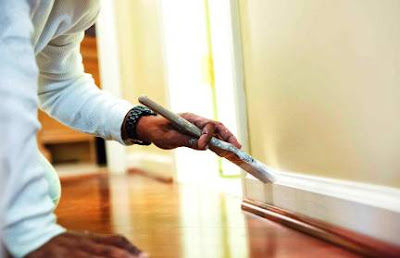Some people have a misconception that stained glass is clear glass that has been painted to a desired color. Actually, stained glass is colored while it is still in its molten form by adding metal oxides. Painted stained glass is already colored and has had a design painted on it.
Painting on stained glass is done to add humanistic details of the face, hands, feet, or shading of the body and hair. Painting reduces the amount of cutting and leading of many tiny pieces of stained glass. Painting enhances the beauty, textures, and color that are already in the stained glass.
You don't have to be a talented "artist" in order to paint on stained glass windows; although, a little drawing experience and some knowledge of perspective and the human anatomy can be helpful. If you can find classes on stained glass painting, it always helps to learn from someone who has already learned what works and doesn't work. If you cannot find classes, look for information online, on related online forums and in instructional books at craft stores, stained glass shops, or in your local library.
You can spend as little or as much as you want on stained glass painting tools and supplies. You can get started for as little as $20 to $100. You can save money by making some of your own stained glass painting equipment. Suppliers for stained glass paints and tools can be found by searching on the internet and at craft and supply stores. Be careful of the paints you choose because the paints for stained glass painting are specific.
Stained glass paint is a high-fired permanent paint which actually has glass (called the vehicle) in it. Stained glass paint also contains lead and has coloring agents like sand, alumina, clay, red or white lead oxide, boric acid, potassium and sodium. The lead in the stained glass paint refracts light. The matt (paint) can be applied, taken out in the tracing, fired, and then applied again, depending on the lighting, detail, and textures you want to achieve in your stained glass painting.
A few good brushes, spatulas, a small easel with a thick-plated glass surface, a light box and an inexpensive small, electric kiln would be a good start on supplies needed to do stained glass painting. In order to save money, you could build your own easel and light box and purchase a used kiln from ads in stained glass magazines or online. You can also make your own mahl sticks and bridges which are wooden supports for your hand and arm for helping with paint stroke technique.
Your work area does not have to be large. It could be an area set aside in your stained glass workshop with a good source of natural light from a window. You need plenty of storage including a palette box for storing the color palettes you make.
You will need squares and rectangles of scrap clear glass, ground and rounded on the edges to prevent cutting yourself. These scraps will be for practicing your stained glass painting and tracing technique.
Armed with the knowledge you gain from sources and practice, you will find that there really is no mystery to stained glass painting.








No comments:
Post a Comment